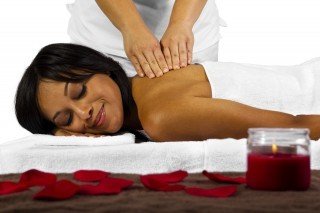As you age, your body encounters changes and stresses. This is a fact of life that we learn when we are very young, though as we age, the sensation of bodily pain can become more acute. Longer-term health issues can also develop over time. In this article, you’ll discover some of the best ways to maintain your bodily health – by which we mean skeletal and muscular health – at a time when you’re increasingly vulnerable to developing chronic pain or distressing bodily issues. Read on to learn some of the easy steps to take to reduce pain as you age.
How to maintain your health as you age
Work Smart
As you grow older, your career requires you to place more and more focus on the development of your professional self and less and less time on your physical health. For those who start families, you’ll also have less time to yourself, as you’ll be required to spend much of your free time raising your family.
For millions of individuals, the twin stresses of raising a family and working hard in their careers can lead to the slow deterioration of their bodies. That’s because they’re not tending to their bodies like they used to. So, the tip here is to work smart: when you’re heading into work for eight hours sat at a desk, ensure you’re working from a comfortable chair, and that you’re getting exercise throughout the day. This will help you avoid back issues, as well as other bodily issues related to aging.
Posture Correction
While you may be disinterested in your posture as a young man or woman, when you reach middle age, your posture becomes one of the key elements that can influence your bodily health, the position in which your skeleton holds itself, and the tension and strength of your muscles. Typically, a bad posture will result in you placing too much stress on a small area of your body; a good posture will place your weight on firm and desirable places, like your hips and the small of your back. 
As such, you should make improving your posture a top priority when you’re sitting at work, relaxing at home, or even walking down the street. By over-stressing one’s back with a bad posture, we can often find ourselves slipping a disk down the line. Such back issues can often lead to chronic pain that takes weeks or months to emerge from – so addressing your posture is a great way to avoid these issues as you grow through middle age.
Exercise as you age
No health tip page is complete without a nod to exercise. This is one of the greatest ways to regulate the body and train your muscles to withstand the stresses of life. For those in middle age, as we’ve seen, there tends to be a little less time to work on your body and to keep yourself in excellent shape. You’re simply too busy to head to the gym regularly, and you’re often too tired to get yourself into a fitness routine.
While these excuses are no doubt valid, they’re self-defeating. That’s because exercise provides a wealth of health benefits, the likes of which you will not be able to source from any other lifestyle choice. By getting yourself out on jogs, cycles, or swims, you’ll be able to provide your body with the guidance to produce strong muscles in all the areas you’ll need them, which will ensure you avoid poor bodily health as you grow older. Swimming is especially recommended for older people: it’s non-weight-bearing, which means you’re unlikely to sustain an injury while exercising in your local pool.
Targeted Muscle Building
Another way to exercise, although in a less holistic fashion, is to target specific areas of the body. If, for instance, you’re finding it more and more difficult to sleep because your back is in pain, you should find a routine in which you target your back muscles to strengthen that part of your body. You can find expert advice online, in exercise journals, and in medical reviews to help you develop your exercise routine for specific muscles and target areas.
 Remember that this kind of targeted muscle development is only a part of your overall exercise routine. A holistic approach is often superior to targeting specific parts of your body. Nonetheless, you’ll be able to alleviate chronic pain and strengthen your body and musculoskeletal systems through the kinds of targeted exercise advocated online.
Remember that this kind of targeted muscle development is only a part of your overall exercise routine. A holistic approach is often superior to targeting specific parts of your body. Nonetheless, you’ll be able to alleviate chronic pain and strengthen your body and musculoskeletal systems through the kinds of targeted exercise advocated online.
How You Sleep
Have you noticed your pain getting worse when you get into bed? Or have you noticed that you can only sleep in one position, and this position may be damaging your back or other areas of your body? Millions of people across the world feel themselves bound in a trade-off between sleep and correct sleeping posture. They’re usually unwilling to change how they sleep to improve their posture, which can lead to difficulties with their back down the line.
Good bedtime advice
The advice here, then, is to attempt to develop a healthier sleeping arrangement that allows you to position your body – and especially your back – comfortably as you sleep. Often, those who sleep on their sides or on their bellies can develop back difficulties. The ideal position to sleep in, according to medical advice, is on one’s back. If you’re able to slowly change your sleeping preferences to match this advice, you’ll be caring a little more for your spine. However, take note, snoozing on your back can cause the tongue to block the breathing tube. This makes it a dangerous position for those who suffer from sleep apnea (a condition that causes periods of breathlessness). This position can also make snoring more severe.
Aids and Products
Speaking of the bedroom, there are several products that you can purchase in order to make your night’s sleep both more comfortable and more constructive for your back and spine. Anyone with spinal issues should first consult a doctor or health professional for advice on which products they’d recommend, but, if you’re struggling with sleep and you’re in pain in the day, one or more of the following products may be useful to you:
- An electric bed, which adjusts its angle and height to your specific needs
- A memory foam mattress and memory foam pillows
![worry sleep [longevity live]](data:image/svg+xml;base64,PHN2ZyB3aWR0aD0iMSIgaGVpZ2h0PSIxIiB4bWxucz0iaHR0cDovL3d3dy53My5vcmcvMjAwMC9zdmciPjwvc3ZnPg==)
- Higher-quality linen and high-quality, puffy duvets
- Mattress toppers designed to aid sleep and back pain
Many mattress companies offer a free trial, which means that you can really shop around and test in order to find the mattress that best soothes your painful back.
New Technology
The technology doesn’t end in the bedroom. There are a number of emerging technologies that are designed to help the aging live a more comfortable and contented life – and this trend is set to become more exciting and innovative as time goes on. If you’re desperate for a back fix, or you’re looking for a different angle from which to tackle your aching muscles, you may find these technological developments useful.
If you’re interested in developing technologies, you should keep up to date with medical technology journals and keep an eye out on e-commerce sites for new products that promise an enhanced night’s sleep or relief from chronic pain. Remember that painkillers will only numb the pain – but a more holistic strategy will help you to maintain your lifestyle, free from pain and free from painkillers. Getting new stem-cell-derived surgery for lumbar herniated discs can often be a high-tech solution individuals are looking for to help with chronic back pain, for instance.
Massage
In many cultures around the world, massage is seen as an important element to one’s weekly or monthly routine. Promising a period of relaxation probing into some of your most problematic muscles, a massage will help you unwind. This relaxation can, in itself, be a cure for some of the tight muscles you’ve been carrying around with you in your daily life. But a massage therapist will also ask you about your body, and which parts of your body are in pain, in order to massage these parts of your body to remove lactic acid built up in over-stressed muscles.
 Furthermore, there are a number of therapies – like acupuncture and chiropody – which are designed to help your back. These variants on the ‘classic’ massage can also prove helpful for those with back issues; do consider them if you’re looking to manage pain in your back muscles or spinal difficulties in later life.
Furthermore, there are a number of therapies – like acupuncture and chiropody – which are designed to help your back. These variants on the ‘classic’ massage can also prove helpful for those with back issues; do consider them if you’re looking to manage pain in your back muscles or spinal difficulties in later life.
A Healthy Diet
When you eat the right diet of balanced foodstuffs, you’ll be giving your body the best base from which to build new muscle and burn fat. It can be difficult to provide yourself with a sustained, balanced diet – this kind of diet takes time and cash to perfect. But it’s vitally important if you’re looking to maintain your health as you age – and avoid obesity and other disorders and health issues related to poor eating or overeating.
Lose Weight
Meanwhile, if you’re suffering from a bodily issue that’s related to being overweight – and back pain can be just that – it may be time to make a concerted effort to lose a few pounds. Of course, this is easier said than done in practice, but it’s something that can give you a better night’s sleep and a less painful day, as well as a slew of other health benefits, too. Slimming down in middle age can help you prolong your life, avoiding some of the health issues that are encountered in later life.
Drinking and alcohol as you age
The drinks that you take in on a regular day also impact your overall health. If you’re not taking on enough fluids, you’ll find that your whole body is less able to move nutrients and minerals around your body. You’ll feel lethargic and tired. With more water and juices full of minerals and vitamins, you’ll find yourself more awake, alert, and mobile, which will help all of your muscles.
On the other hand, alcohol is regarded as poor for your health. Habitual drinkers and those who drink heavily from time to time are depriving their bodies of nutrients and processes, which, over time, can cause long-term health issues.
Alcohol is also rich in calories, which contributes to obesity. Finally, alcohol can damage your internal organs – the pain of which many mistake for back pain or muscular injury. Reducing your alcohol consumption is, therefore, a great way to rid yourself of pain and to live a healthier lifestyle.
Walk, Don’t Drive
Maintaining an ‘active’ lifestyle can often feel like a cliché. What, exactly, is meant by this advice, and why does it help? Well, being active is essentially making decisions that increase your bodily movements each day. It doesn’t mean heading to the gym each day after work, but it might mean:
- Walking to work or to the store instead of driving there
- Make the effort to take a stroll every lunchtime to get your blood circulating
- Deciding to stop online shopping, and to purchase goods in your local town center instead
- Elect to pick up your takeaway meal on foot, instead of having it delivered to your door
- Cycling through local wildlife reserves on days out, instead of driving through
All of these decisions will encourage your body to move, your blood to circulate, and your lungs to work a little harder to transport oxygen to your body. Meanwhile, moving a little more each day will give you valuable additional muscle, which will help support your frame when standing and will help you sleep easier, too.
Maintaining a Diary
A diary is one of the best ways to track your progress and to hold yourself to some of the resolutions that you’ve made. Note down how you are sleeping from week to week, and the changes you’re making to your lifestyle. If you’re exercising more, note down your weight. If you’re eating healthier, describe the ingredients in those meals.
Not only will this diary help you keep on track of the changes you’re making to your lifestyle, providing motivation to keep going – but it’ll also help you look back and feel you’ve made progress. You’ll be able to recognize when you turn a corner, with less painful days and more sumptuous sleeps as a result.
The Bottom Line
Use any or all of the tips above in order to maintain better bodily health in the future.
Longevity is not about how long you will live, but how good your life will be as you age. You can read more about how to avoid toxins in your environment to help improve your longevity.



![worry sleep [longevity live]](https://longevitylive.com/wp-content/uploads/2019/04/adult-asleep-bed-935777-320x213.jpg)
![women [longevity live]](https://longevitylive.com/wp-content/uploads/2020/01/photo-of-women-walking-down-the-street-1116984-100x100.jpg)










